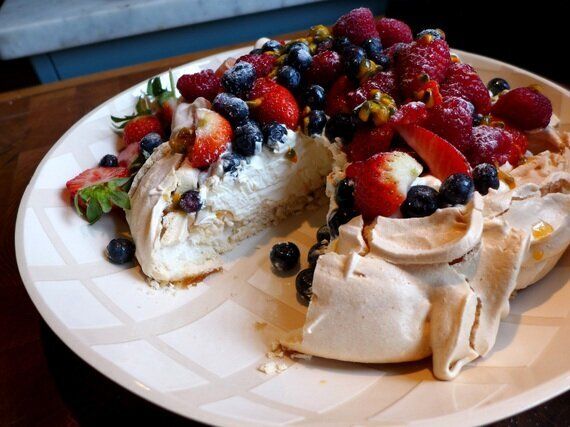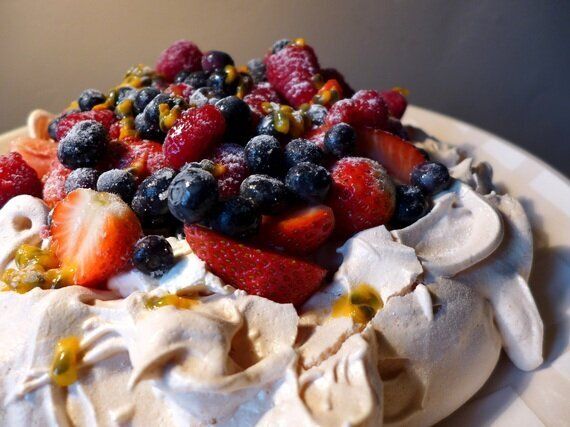
I once tried to make a strawberry pavlova and it was such a disaster that I broke up the meringue and turned it all into an Eton Mess. Pavlovas ... those big meringue nests you fill with cream and fruit to spectacular effect ... can be a bit tricksy. They conspire with your oven to make you look like a bad cook. Then all your friends tell you how easy they are and how theirs work perfectly every time. Pah. Time for a fight-back.
There are three things to remember before you start making meringues: make sure the eggs are at room temperature; that your equipment is completely grease-free; and avoid getting any egg yolk mixed in with the whites, otherwise they won't whip. To be on the safe side, separate the eggs one at a time into a small bowl, then if a yolk breaks and leaks into the white you won't have to start again from scratch. Older eggs whisk up to a higher volume than new-laid.
There are lots of slightly different Pavlova recipes and in the interest of experimentation I think I've tried most of them this week. But the general rule of thumb is to use 50g of sugar to each large egg white. Most recipes also include cornflour and vinegar to stabilise the eggs whites and make the centre more mallowy. If you already have a perfect Pavlova recipe, stick with it. Otherwise you might like to try the method given below.
For a seasonal topping, try caramelised blood oranges, based on this Sophie Grigson recipe. The citrus provides a good contrast to the sweetness of the meringue and a delicious drizzling syrup. For a faster and equally tasty fix, fresh berries are good, especially if you spoon over some tangy passion fruit.
Pavlova (serves 6-8)
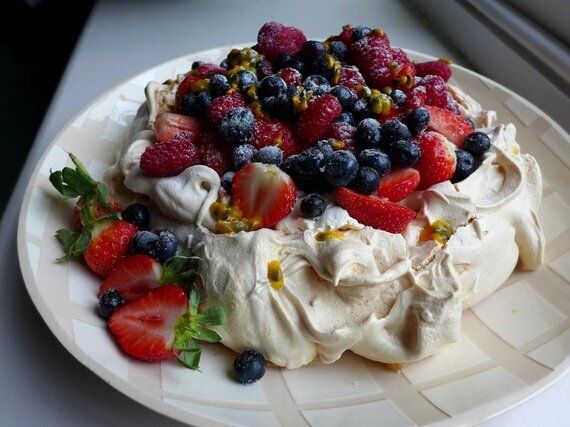
Ingredients:
The whites of 4 large eggs
200g caster sugar (I used golden caster, which gives a warm hue rather than a snowy meringue)
2 level tspn cornflour
1 tspn white wine vinegar
A few drops of vanilla extract
To finish:
350 ml double cream
The fruit of your choice
Optionally, icing sugar, to dust
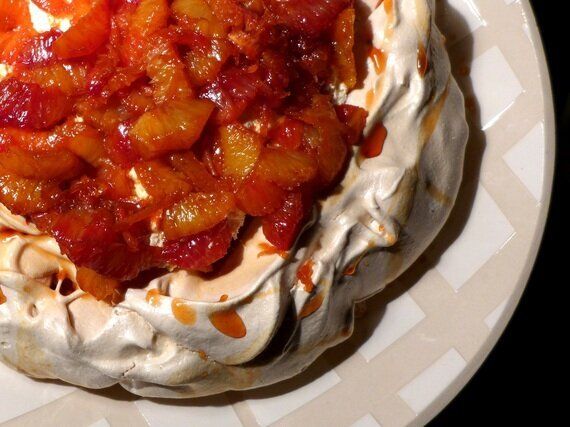
Method:
Pre-heat the oven to 150C/300F/Gas Mark 2. On a sheet of baking paper, draw a circle round a 25cm/10" dinner plate.
In a large bowl, whisk the egg whites to stiff peaks. You should be able to hold the bowl over your head without getting egg on your face (sorry) but don't over beat or the egg white will collapse.
Add the sugar, a tablespoon at a time, whisking after each addition until you have a stiff and shiny mix. Sprinkle over the vanilla extract, cornflour and vinegar and fold in with a metal spoon.
Put a dab of meringue at each corner of the baking paper and stick it to a baking sheet, with the pencil marks underneath so you can see the circle through the paper.
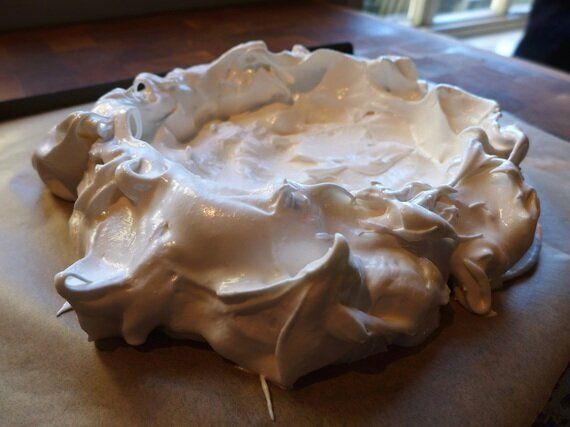
Dollop the meringue inside the circle, building up the outside edges with a spoon or spatula so you have soft peaks around the edges of your nest.
Place in the oven and cook for one hour, then turn off the oven but leave the pavlova inside to cool completely. You can make it the night before, if you like, as long as you don't need the oven for something else.
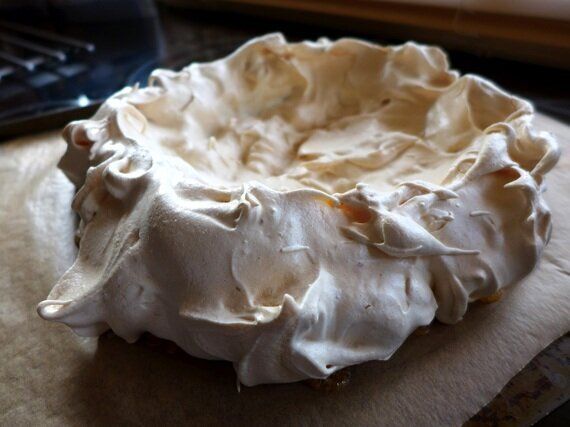
Once cold, take it out and gently remove it from the paper, loosening with a spatula if necessary. Put it on a serving plate.
Up to two hours before you want to eat, whip the cream to soft peaks and pile it into the centre of your cooled meringue. Scatter with the topping of your choice and dust lightly with icing sugar if you like.
